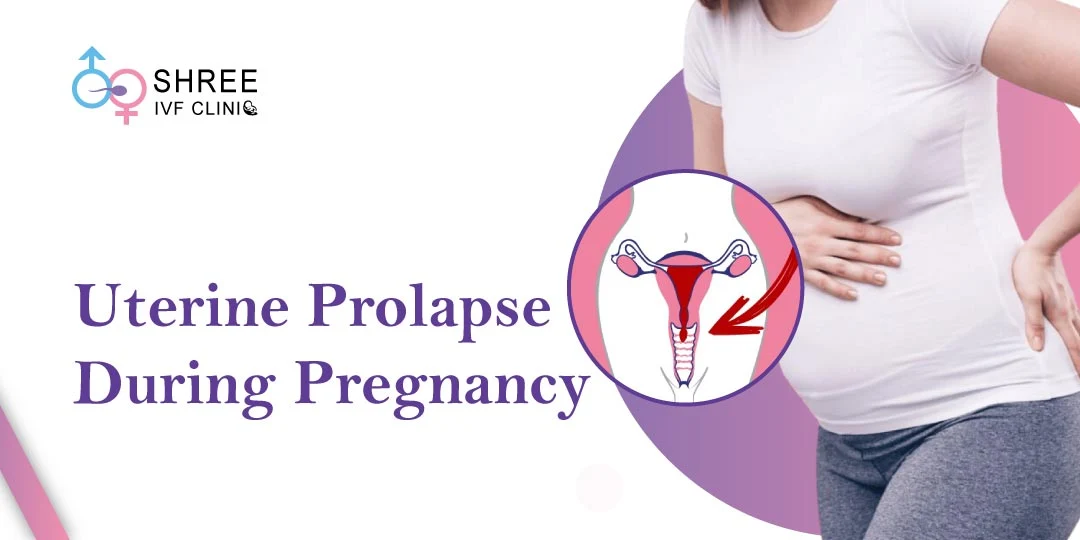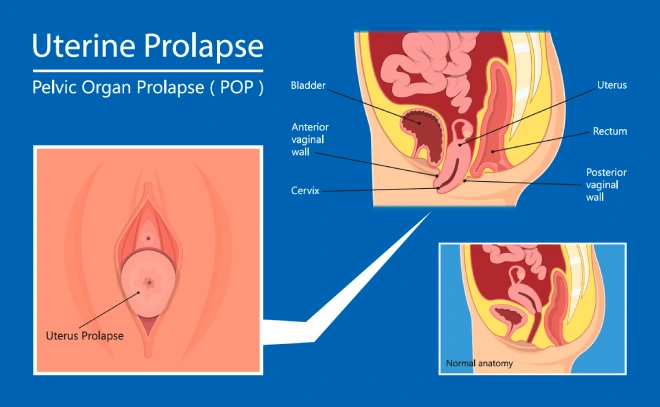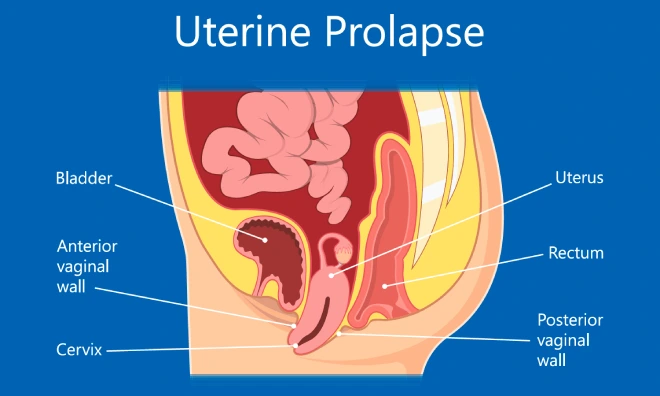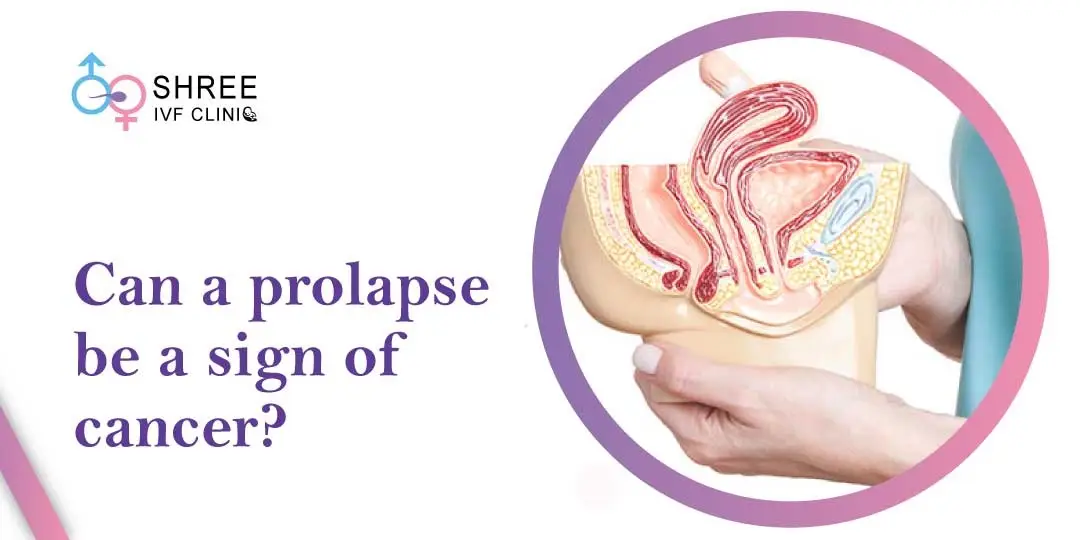Uterine Prolapse During Pregnancy: Risks, Symptoms & Care
UPDATED ON 13 OCT. 2023
Pregnancy is a transformative journey filled with joy and anticipation. However, it can also bring about specific challenges and discomforts, including the risk of uterine prolapse.
This article will explore everything you need to know about uterine prolapse during pregnancy. Understanding this condition is crucial for expectant mothers to ensure optimal care and make informed decisions.
From pelvic organ prolapse symptoms and risk factors to prevention strategies and available treatments, let us delve into this topic to provide valuable insights.

AUTHOR
Dr Jay Mehta
Scientific Director & IVF Specialist with 10+ years of experience
CONDITION
GET IN TOUCH ON
Uterine prolapse occurs when the muscles and ligaments supporting the uterus weaken, causing it to descend into the vaginal canal. This can result from age, genetic predisposition, repeated childbirth, obesity, chronic coughing, and hormonal changes.
Understanding the anatomical factors involved in uterine prolapse is crucial for comprehending why this condition develops. We will explore the intricate structures of the pelvic floor and how they contribute to uterine prolapse.
Additionally, we will discuss the different types of uterine prolapse, including anterior, posterior, and complete prolapse, and their specific characteristics.
Understanding Uterine Prolapse

During pregnancy, the body undergoes significant changes to accommodate the growing baby. Uterine prolapse occurs when the uterus descends into the vaginal canal due to weakened pelvic floor muscles and ligaments.
It is essential to differentiate between normal pregnancy discomforts and uterine prolapse to ensure proper diagnosis and management.
Uterine prolapse during pregnancy can be caused by factors such as:
- Increased pressure on the pelvic floor due to the weight of the growing uterus.
- Hormonal changes that affect the strength and elasticity of the pelvic tissues.
- Previous pregnancies or deliveries have weakened the pelvic floor muscles.
Understanding these causes helps gynaecologists develop appropriate treatment plans and support expectant mothers throughout their pregnancy.
also Read: What Are Prolapsed Uterus Treatment at Home?
Uterine Prolapse During Pregnancy Symptoms

Recognising the symptoms of uterine prolapse during pregnancy is crucial to seek timely medical intervention. Common signs include:
- A feeling of heaviness or pressure in the pelvis.
- The sensation of something bulging out of the vagina.
- Backache or discomfort in the lower abdomen.
- Urinary issues, such as frequent urination or difficulty emptying the bladder.
It is worth noting that some women may experience no symptoms at all. Regular prenatal check-ups and open communication with your doctor are essential for early detection and appropriate management.
Uterine Prolapse Risk Factors
Certain factors increase the risk of uterine prolapse during pregnancy. These include:
- Multiple pregnancies: Carrying more than one baby increases pressure on the pelvic floor muscles.
- Obesity: Excess weight can strain the supportive structures of the pelvis, increasing the risk of prolapse.
- Age: Advanced maternal age may weaken the pelvic floor muscles, making them more susceptible to prolapse.
- Genetic factors: Family history and inherited weaknesses in pelvic support structures can contribute to uterine prolapse.
While these factors may increase the likelihood of uterine prolapse, it is essential to remember that every woman’s experience is unique. A gynaecologist will evaluate your circumstances and provide personalised guidance.
Impact on Pregnancy and Delivery
Uterine prolapse during pregnancy can have implications for pregnancy and delivery. It may lead to complications such as:
- Increased discomfort during pregnancy, including back pain and pelvic pressure.
- Urinary problems, such as urinary incontinence or recurrent urinary tract infections.
- Difficulties during labour, potentially requiring interventions such as assisted delivery or cesarean section.
Rest assured, a gynaecologist will closely monitor your condition and make recommendations to ensure a safe and healthy pregnancy.
Also Read: Uterine Prolapse in Different Life Stages

4,790+
379K+
” Every individual and couple’s journey is unique, and
finding the right solutions tailored to their specific
circumstances can make all the difference “
Prevention and Precautions
While uterine prolapse cannot always be prevented entirely, there are measures you can take to reduce the risk and manage the condition effectively. Some preventive strategies include:
- Regular pelvic floor exercises:

Performing Kegel exercises helps strengthen the pelvic floor muscles, supporting the uterus and reducing the risk of prolapse. Your doctor or a physiotherapist can guide you on performing these exercises correctly.
- Maintaining a healthy weight: Eating a balanced diet and engaging in regular physical activity can help manage weight gain during pregnancy, reducing the strain on the pelvic floor muscles.
- Avoiding heavy lifting: Minimize heavy lifting or straining activities, as they can weaken the pelvic floor muscles.
Discuss these preventive measures with a gynaecologist to ensure they are appropriate for your situation.
Medical Diagnosis and Treatment Options
If you suspect you have uterine prolapse during pregnancy, it is essential to consult a gynaecologist or obstetrician for a proper diagnosis. They will conduct a physical examination and may use imaging tests, such as an ultrasound, to assess the degree of prolapse.
Treatment options for uterine prolapse during pregnancy depend on the severity of the condition and how it affects you. Non-surgical options may include:
- Pelvic floor exercises: A gynaecologist may recommend specific exercises tailored to your needs.
- The use of a pessary: A pessary is a device inserted into the vagina to support the uterus and alleviate symptoms.
Surgical intervention may be considered in more severe cases or when conservative measures are ineffective. However, surgeries during pregnancy are rare and generally reserved for extreme situations.
Seeking Medical Advice and Support
If you suspect or have been diagnosed with uterine prolapse during pregnancy, seeking appropriate medical advice and support is crucial.
Consult specialist in pelvic organ prolapse treatment for comprehensive care tailored to your specific needs. They will monitor your condition closely throughout your pregnancy and guide you in managing symptoms and ensuring a safe delivery.
Remember, a gynaecologist is your ally in this journey and will work with you to address any concerns or challenges you may face.
Conclusion
Uterine prolapse during pregnancy can be a challenging condition to navigate, both physically and emotionally. By understanding the symptoms, risk factors, preventive measures, and available treatments, you can take proactive steps to manage and minimise the impact of uterine prolapse on your pregnancy and overall well-being.
Reach out for support, prioritise self-care, and lean on a gynaecologist for guidance. Remember, you are strong, and with the proper support and resources, you can navigate this journey with confidence and grace.
AUTHOR
Dr Jay Mehta
Scientific Director & IVF Specialist with 10+ years of experience
CONDITION
CALL US 24/7 FOR ANY HELP
GET IN TOUCH ON
Share Article on
Recommended Reading
How is a Bleeding Prolapse Treated?
Epithelial, Germ Cell, and Stromal are ovarian cancer types which are classified by their originating cells
Can Pelvic Organ Prolapse Go Away On Its Own?
Uncover the potential for pelvic organ prolapse (POP) to resolve naturally. Explore symptoms, management options, and factors influencing resolution.
Can Pelvic Organ Prolapse be a Sign of Cancer?
Pelvic Organ Prolapse (POP) doesn’t directly cause cancer, but women with this condition are at a higher risk of developing certain cancers like uterine & gallbladder cancers




